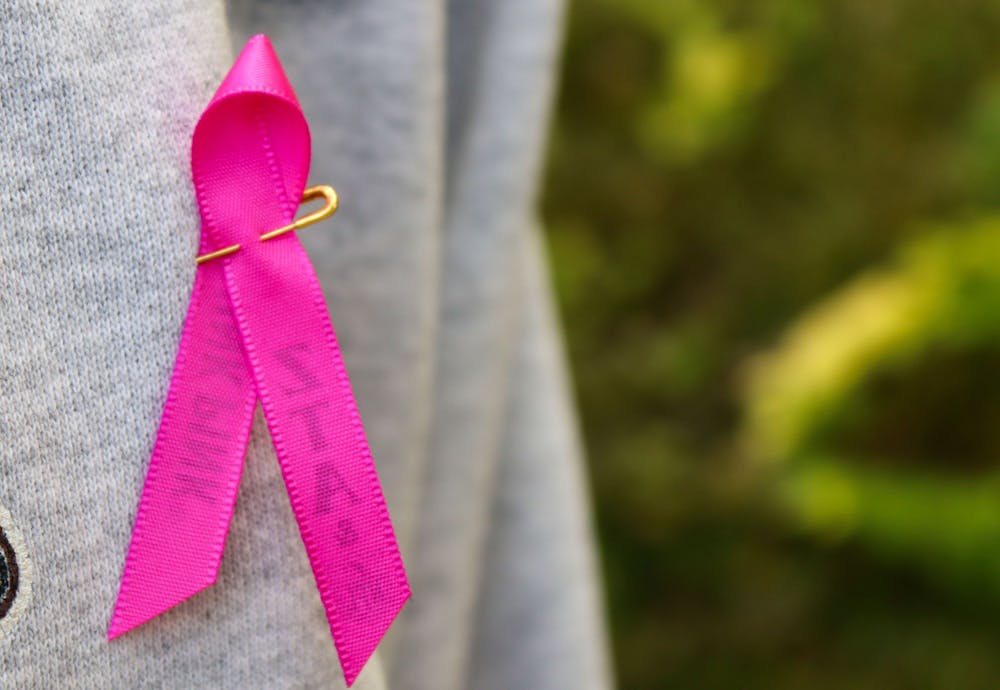October, Breast Cancer Awareness Month, is a time to bring awareness to the disease and the risks of the spread of cancer, which experts say decreases the survival rate.
Anna Maria Storniolo, the Andrew and Peggy Thomson Professor of Hematology Oncology at the Indiana University School of Medicine, said breast cancer can be detected by physical exams, self exams, mammograms, ultrasounds and breast MRI scans. She said physical signs would be any change in what the breast looks or feels like.
Storniolo said although most women look for a lump, they should be looking for a change. She says the skin may feel thicker, there may be pulling of the skin, a change in the nipple, a dimple or retraction in the skin, redness in the skin, or a lump in the breast or under the arm.
Storniolo said 5 to 7% of breast cancer is due to predisposing genetic problems, 25% is familial, and 70% is related to our environment.
Storniolo said as soon as breast cancer spreads to other parts of the body, removal is no longer an option. At that point, she said anti-estrogen therapies and chemotherapy would be used to treat it.
Storniolo said early detection is not prevention of breast cancer, but it leads to finding it at a curable stage. She said the modifiable preventative actions include leading a healthy lifestyle by exercising regularly, avoiding smoking and alcohol and eating healthy food. She said avoiding taking post-menopausal estrogen will also help to decrease the risk of breast cancer.
Storniolo said the preventative actions that cannot be changed include family history, having less children and having children before the age of 30.
Men can also be affected by breast cancer, Storniolo said. She said men who carry some of the genetic mutations are more at risk than others.
Kathy Miller, associate director for Clinical Research at the IU Simon Cancer Center and co-chair of the National Cancer Institute’s Breast Cancer Steering Committee, said breastfeeding also reduces the risk of breast cancer by maturing the cells in the breast and reducing the total lifetime exposure to estrogen.
Miller said radiation to the breast, particularly during puberty, is one way a person’s risk of breast cancer increases. Hodgkin’s disease, a type of lymphoma most common in teenage girls, is often treated with radiation which may lead to a higher risk of breast cancer.
“What makes breast cancer potentially life-threatening for someone is not what happens in their breast, but that the breast cancer may have traveled through the bloodstream to other parts of the body where it can impact the function of those other organs and become life-threatening,” Miller said.
The increase of exposure to estrogen over time will cause a much greater risk of breast cancer, said Bryan Schneider, Vera Bradly Professor of Oncology and director of the IU Health Precision Genomics Program. He said obesity will increase estrogen exposure.
Schneider said there are other risk factors that are not as easy to modify.
“There are some other risk factors for breast cancer that aren’t really as easily modifiable, such as when a woman begins to menstruate or how long she menstruates,” said Schneider.
If breast cancer spreads to the lymph nodes, there is higher risk for the cancer to spread to other parts of the body, Schneider said.
According to Cancer.net, the 5-year survival rate of women with breast cancer located only in the breast is 99%. When the cancer has spread to the regional lymph nodes, the 5-year survival rate decreases to 86%. If the cancer spreads to a distant part of the body, the survival rate goes down to 28%.
Experts advise regular screening and self exams in order to detect breast cancer at a curable stage. One of the places in Bloomington that offers mammograms is Southern Indiana Radiological Associates.





